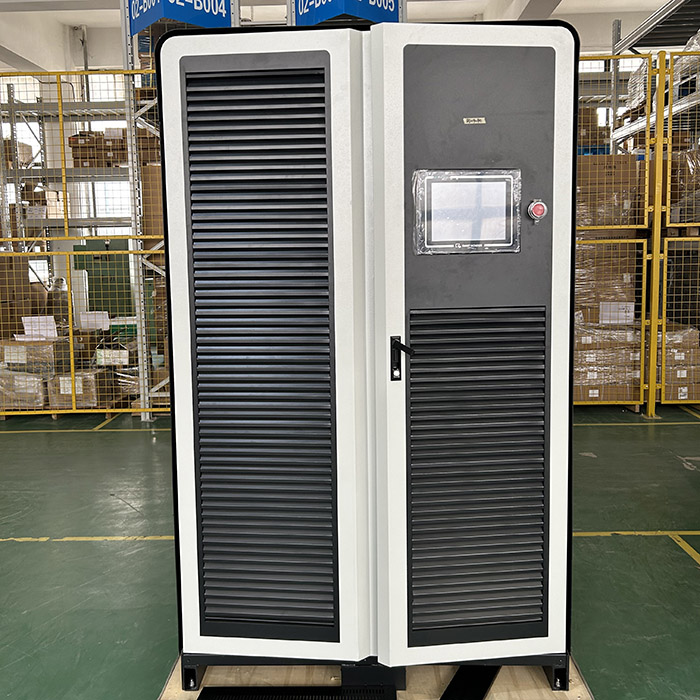With the rapid popularization of renewable energy and the booming development of the electric vehicle industry, how to achieve efficient and safe energy management has become a key issue. Recently, SCU provided an integrated green energy solution for German customers – an integrated photovoltaic storage and EV charging system. Through the intelligent energy management system (EMS), it realizes the comprehensive coordination of photovoltaic, gird, energy storage and EV charger, bringing customers a stable and efficient energy experience.

Project background: meeting the needs of intelligent energy use
German customers have always had a strong interest in intelligent green energy systems, hoping to use photovoltaic energy and energy storage systems with EV chargers to provide charging services for electric vehicles. However, in order to ensure the service life of energy storage batteries and the stability of the system, customers have put forward higher requirements for system operation mode and power management. With rich technical experience, SCU provides a set of customized integrated photovoltaic storage and EV charging systems to perfectly meet customer needs.
SCU integrated PV storage and EV charging solution
The SCU integrated system photovoltaic storage and charging is equipped with a 150kw power conversion system (PCS) with a 150kw MPPT module, two sets of 768V 280Ah batteries, a 240kw DC EV charging stack, and two 250A CCS2 EV charger terminals. It is globally intelligently controlled through EMS to ensure that the system automatically switches operating modes under different circumstances.

PV BESS EV charger solution core functions and highlights
1. Intelligent charging power management to ensure battery safety
The system dynamically adjusts the output power of the EV charger according to the state of the energy storage battery (SOC):
- When the battery SOC is between 20%-90%, the output power of the EV charger is limited to 200kW to ensure efficient charging.
- If the SOC is lower than 20%, the output power of the EV charger is automatically reduced to 50kW to protect the battery from over-discharge.
- When the SOC returns to 25%, the EV charger power returns to 200kW to maintain efficient operation and extend battery life.
2. Flexible switching of multiple working modes
Through intelligent control technology, efficient management of photovoltaic, energy storage and charging is achieved.
- Priority photovoltaic power supply: Photovoltaic power is first used to power EV chargers and loads, and the remaining power is used to charge energy storage batteries.
- Energy storage auxiliary power supply: When photovoltaic power is insufficient, the energy storage battery releases power to support the operation of EV chargers and other equipment.
- Grid supplement mode: When power demand peaks or battery power is insufficient, the system automatically switches to grid power supply.

3. Efficient energy utilization
Photovoltaic power generation and energy storage dispatching cooperate to reduce energy waste, maximize self-generation and self-use, and further reduce grid dependence and electricity costs.
4. Modularity and easy scalability
The system adopts a modular design, and customers can expand the number of energy storage or EV chargers according to future needs to adapt to energy demand in different scenarios.
Project results and customer benefits
- Highly integrated
By integrating photovoltaic, energy storage and charging facilities into one system, not only saves floor space but also reduces energy loss between modules and improves overall efficiency.
- Reduce grid pressure
The integration of photovoltaic storage and charging can achieve “on-site power generation and on-site use”, and reduce dependence on the grid, especially during peak hours, which helps to ease grid load pressure.
- Extend battery life
The dynamic management of the SOC of the energy storage battery effectively protects the battery, extends its service life, and reduces maintenance costs.
- Reduce electricity costs
Through the peak-shaving and valley-filling strategy, users can use low-price periods to charge the energy storage system, reduce electricity consumption during high-price periods, and thus reduce electricity costs.
- Green energy application
The system maximizes the use of clean energy, reduces a large amount of carbon emissions each year, and helps customers achieve sustainable development goals.
SCU PV storage and charging industry advantages
As an excellent energy storage and EV charger solution provider, SCU has rich experience in the design and integration of photovoltaic storage and charging integrated systems. EMS has multi-scenario adaptation capabilities to ensure operational stability and efficiency. The products meet Europe’s strict technical and environmental standards to ensure safety and reliability, and provide full-process technical support and services from photovoltaic, energy storage to EV charging integration.
In the future, SCU will continue to focus on technological innovation, provide more efficient and intelligent energy solutions to global customers, jointly promote the widespread application of clean energy, and contribute to the goal of carbon neutrality.

